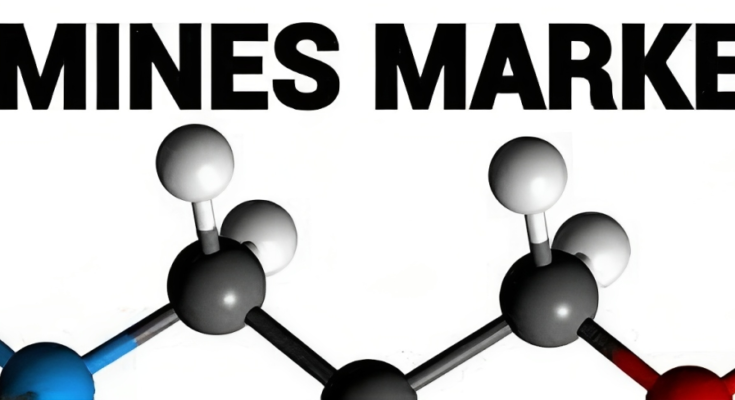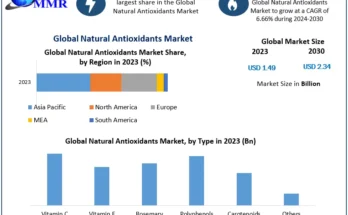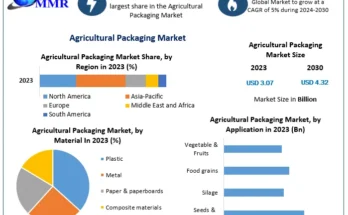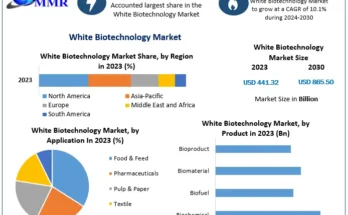Global Amines Market has valued at USD16.8 billion in 2022 and is anticipated to project robust growth in the forecast period with a CAGR of 4.56% through 2028. Amines are utilized in the agricultural sector as a nitrogen source and natural fertilizer. The robust growth of this sector, driven by the increasing demand for high yields and improved crop protection, is boosting the demand for amines. The usage of amines in agrochemicals to enhance pesticide solubility in water is also contributing to market growth. Moreover, amines play a crucial role in plastic softening and carbon dioxide removal from ammonia gas, leading to the production of synthetic ammonia and further stimulating market expansion. Furthermore, various end-use industries such as chemicals, energy, and plastics benefit from the applications of amines, supporting market growth.
The rapid growth of the construction and infrastructure industry is an additional driver for market expansion. Amines are also employed as additives in paint coatings, with recent technological advancements resulting in the development of high-quality amines for this purpose. For example, multifunctional amines provide excellent co-dispersion, viscosity stability, film performance, and additive optimization for waterproof coatings, thereby catalyzing the amine market. Furthermore, due to their emulsification properties, amines find application in various industrial sectors, including gas treatment and chemical manufacturing, further contributing to industry growth.
Key Market Drivers
Growing Usage of Amines in Personal Care and Cosmetics Products
Amines are associated with numerous medicinal benefits and contribute to the treatment of life-threatening allergic reactions caused by insect bites or stings, foods, medications, latex, and other factors. This, in turn, drives market growth. Furthermore, the increased awareness of hygiene due to the coronavirus pandemic has bolstered the demand for personal and home cleansing products, further augmenting market growth. Amines find applications in various cleaning products such as floor and tile cleaners, as well as laundry detergents, effectively removing dirt, grease, and stains and supporting market expansion. Additionally, the thriving cosmetics industry is accelerating the growth of the amines market. Amines play a crucial role in personal care and cosmetics products by regulating pH levels and reducing surface tension.
They are extensively used in cosmetics like eyeliner, mascara, brushes, hair care products, sunscreens, and skin cleansing products, among others, thereby driving market growth. Furthermore, the increasing consumer awareness of safe water usage is propelling the amines industry. Amines are employed to mitigate the effects of carbon dioxide and other acids, as well as to control the pH of water. According to the World Health Organization (WHO), nearly 785 million people lack access to basic drinking-water services, resulting in various waterborne diseases such as diarrhoea, cholera, dysentery, polio, and typhoid. The growing awareness of contaminated water and the measures taken by governments and organizations to ensure safe drinking water are expected to fuel the market growth.
Increasing Demand for Liquid Detergent
Amines, a versatile class of organic compounds, have a wide range of applications across industries. The increasing demand for liquid detergents has emerged as a key driver behind the growing global market for amines. Derived from ammonia, amines play a crucial role in formulating liquid detergents. They serve as surfactants, reducing the surface tension of water and enhancing its interaction with oils and other hydrophobic substances. This property makes amines essential for creating detergents that effectively lift and remove stains, dirt, and oils from fabrics and surfaces. The selection of amines used in liquid detergents varies depending on the desired product characteristics. Primary amines are commonly used as emulsifiers, facilitating the dispersion of oils and greasy soils.
On the other hand, tertiary amines act as antistatic agents, improving the softness and smoothness of fabrics. As consumer lifestyles evolve and technology advances, there is a growing preference for convenience and efficiency. Liquid detergents offer ease of use and the ability to handle a wider range of cleaning tasks, driving consumer preference. Additionally, liquid detergents often have a lower environmental impact as they are effective in cold water washes, saving energy. The increasing demand for eco-friendly alternatives further boosts the demand for liquid detergents. Rapid urbanization has led to smaller living spaces and higher population densities, creating a need for more compact and versatile cleaning solutions. Liquid detergents fulfill this requirement by occupying less storage space while providing superior stain-removing capabilities.
Growing Demand of Amines for Water Treatment
In recent years, the global market for amines has witnessed remarkable growth, with a significant driving force being the escalating demand for amines in water treatment applications. Amines, characterized by the presence of nitrogen, are organic compounds that have found extensive utility across diverse industries. Their role in water treatment has gained increased attention due to mounting concerns over water quality and environmental sustainability. One of the key applications of amines in water treatment is their use as corrosion inhibitors. Corrosion of water infrastructure and industrial equipment can result in structural damage, increased maintenance costs, and potential health risks. Amines can form a protective layer on metal surfaces, preventing the interaction of metal with water and mitigating corrosion. Additionally, amines play a significant role in pH control.
Acting as both acid and base neutralizers, amines aid in maintaining desired pH levels in water treatment processes. This is crucial for ensuring the efficiency of various chemical reactions and minimizing the adverse effects of extreme pH conditions on equipment and the environment. Industries such as power generation, petrochemicals, pulp and paper, and textiles heavily rely on water in their processes. The expansion of these industries, particularly in developing economies, drives the demand for efficient water treatment methods, thereby increasing the need for amines. Furthermore, growing awareness about water scarcity, pollution, and environmental sustainability puts industries under pressure to adopt responsible practices. Amines offer a viable solution for addressing water-related challenges in a more environmentally friendly manner. With technological advancements, regulatory support, and heightened awareness of the need for responsible water management, the amines market is poised for continued growth and innovation in the realm of water treatment.
Download FREE Sample Report @ https://www.techsciresearch.com/sample-report.aspx?cid=2873
Key Market Challenges
Stringent Government Rules Associated with Amines
Amines are the organic compounds derived from ammonia, play a crucial role in the production of a diverse range of products. These products include solvents, surfactants, agrochemicals, and corrosion inhibitors. However, despite the promising growth prospects, the industry faces a significant challenge in the form of stringent government regulations. These regulations aim to address environmental and health concerns associated with the production, use, and disposal of amines. The release of amines into the environment can contribute to air and water pollution. Hence, regulations often mandate the reduction of emissions of volatile organic compounds (VOCs), including certain amines, from industrial processes. Additionally, the proper disposal of waste products containing amines can be challenging due to their potential to contaminate soil and water. Therefore, regulations may require industries to implement effective waste management practices such as recycling, treatment, and safe disposal. Furthermore, workers involved in the production and handling of amines face potential health risks. To mitigate exposure to hazardous chemicals, regulatory compliance demands the implementation of proper safety measures, provision of protective equipment, and training. In some cases, regulatory agencies also encourage the development and adoption of alternative chemicals or processes that are less harmful to human health and the environment. Such initiatives challenge the status quo of amine usage, promoting a safer and more sustainable approach.
Fluctuating Price of Raw Materials
The amines industry relies heavily on raw materials such as ammonia, ethanol, and fatty acids for production. The prices of these raw materials are influenced by various factors, including geopolitical tensions, supply-demand dynamics, currency fluctuations, and global market trends. The volatility in raw material prices presents significant challenges to the stability and profitability of the amines market. Sudden spikes or drops in raw material prices can disrupt supply chains, impacting production schedules and potentially causing delays in delivering finished products. The unpredictable nature of raw material prices complicates long-term investment planning, as companies may hesitate to invest in expansion or research and development initiatives due to uncertain future costs. Additionally, fluctuations in raw material prices can pose difficulties in determining optimal product pricing. Manufacturers must strike a balance between cost considerations and market competitiveness.
Key Market Trends
Growth in Technological Advancements
The amines industry is undergoing a significant transformation driven by cutting-edge technologies, as the demand for efficient, sustainable, and innovative solutions continues to grow. The utilization of biotechnology and fermentation processes for amines production is gaining momentum. Biocatalysis, which employs enzymes or whole cells to catalyze chemical reactions, offers sustainable and selective pathways for synthesizing complex amines. This approach reduces reliance on petrochemical feedstocks, minimizes waste generation, and provides access to a wider range of chiral and structurally diverse amines. Furthermore, the energy-intensive processes of separation and purification of amines from reaction mixtures are being addressed through technological advancements in separation techniques, including membrane-based separation, adsorption, and crystallization. These explorations aim to minimize energy consumption and enhance the overall efficiency of amines recovery. Ultimately, these innovations contribute to the sustainability of the amines industry by reducing resource consumption and emissions.
Segmental Insights
Product Insights
In 2022, the Amines market was dominated by the Ethanol Amines and is predicted to continue expanding over the coming years. Ethanolamine is predominantly utilized as a cleaning agent, in the form of monoethanolamine and triethanolamine. It also serves as a corrosion inhibitor in lubricants, machining fluids, and cooling systems for industrial, automotive, and marine applications. The increasing awareness regarding health and the growing preference for preventive maintenance are expected to drive the demand for ethanolamine as cleaning agents and corrosion inhibitors. Following ethanolamine, fatty amines, derived from fats, natural sources, oils, or petrochemical feedstocks, represent the second-largest segment.
Application Insights
In 2022, the Amines market was dominated by water treatment segment and is predicted to continue expanding over the coming years. Amines are commonly employed in industrial water treatment facilities, including boilers and cooling towers. The primary objective of industrial water treatment is to address concerns related to corrosion, scaling, microbiological activity, and wastewater disposal. These products are increasingly gaining traction in the water treatment industry due to their remarkable efficacy in eradicating bacteria from water. The growing adoption of these substances in pool water treatment and industrial water discharge, owing to their exceptional germicidal properties, is anticipated to drive market growth.
Related Reports
Petroleum Resin Market [2028] – Report & Market Share
Cosmetic Pigments Market [2028]: Analysis & Forecast
Table of Content- Amines Market
- Product Overview
1.1. Market Definition
1.2. Scope of the Market
1.2.1. Markets Covered
1.2.2. Years Considered for Study
1.2.3. Key Market Segmentations
- Research Methodology
2.1. Objective of the Study
2.2. Baseline Methodology
2.3. Key Industry Partners
2.4. Major Association and Secondary Sources
2.5. Forecasting Methodology
2.6. Data Triangulation & Validation
2.7. Assumptions and Limitations
- Executive Summary
3.1. Overview of the Market
3.2. Overview of Key Market Segmentations
3.3. Overview of Key Market Players
3.4. Overview of Key Regions/Countries
3.5. Overview of Market Drivers, Challenges, Trends
- Voice of Customer
- Global Amines Market Outlook
5.1. Market Size & Forecast
5.1.1. By Value & Volume
5.2. Market Share & Forecast
5.2.1. By Product (Ethanol Amines, Fatty Amines, Alkyl Amines, Others)
5.2.2. By Application (Crop Protection, Surfactants, Water Treatment, Personal Care, Gas Treatment, Others)
5.2.3. By Region
5.2.4. By Company (2022)
5.3. Market Map
- North America Amines Market Outlook
6.1. Market Size & Forecast
6.1.1. By Value & Volume
6.2. Market Share & Forecast
6.2.1. By Product
6.2.2. By Application
6.2.3. By Country
6.3. North America: Country Analysis
6.3.1. United States Amines Market Outlook
6.3.1.1. Market Size & Forecast
6.3.1.1.1. By Value & Volume
6.3.1.2. Market Share & Forecast
6.3.1.2.1. By Product
6.3.1.2.2. By Application
6.3.2. Mexico Amines Market Outlook
6.3.2.1. Market Size & Forecast
6.3.2.1.1. By Value & Volume
6.3.2.2. Market Share & Forecast
6.3.2.2.1. By Product
6.3.2.2.2. By Application
6.3.3. Canada Amines Market Outlook
6.3.3.1. Market Size & Forecast
6.3.3.1.1. By Value & Volume
6.3.3.2. Market Share & Forecast
6.3.3.2.1. By Product
6.3.3.2.2. By Application
- Europe Amines Market Outlook
7.1. Market Size & Forecast
7.1.1. By Value & Volume
7.2. Market Share & Forecast
7.2.1. By Product
7.2.2. By Application
7.2.3. By Country
7.3 Europe: Country Analysis
7.3.1. France Amines Market Outlook
7.3.1.1. Market Size & Forecast
7.3.1.1.1. By Value & Volume
7.3.1.2. Market Share & Forecast
7.3.1.2.1. By Product
7.3.1.2.2. By Application
7.3.2. Germany Amines Market Outlook
7.3.2.1. Market Size & Forecast
7.3.2.1.1. By Value & Volume
7.3.2.2. Market Share & Forecast
7.3.2.2.1. By Product
7.3.2.2.2. By Application
7.3.3. United Kingdom Amines Market Outlook
7.3.3.1. Market Size & Forecast
7.3.3.1.1. By Value & Volume
7.3.3.2. Market Share & Forecast
7.3.3.2.1. By Product
7.3.3.2.2. By Application
7.3.4. Italy Amines Market Outlook
7.3.4.1. Market Size & Forecast
7.3.4.1.1. By Value & Volume
7.3.4.2. Market Share & Forecast
7.3.4.2.1. By Product
7.3.4.2.2. By Application
7.3.5. Spain Amines Market Outlook
7.3.5.1. Market Size & Forecast
7.3.5.1.1. By Value & Volume
7.3.5.2. Market Share & Forecast
7.3.5.2.1. By Product
7.3.5.2.2. By Application




